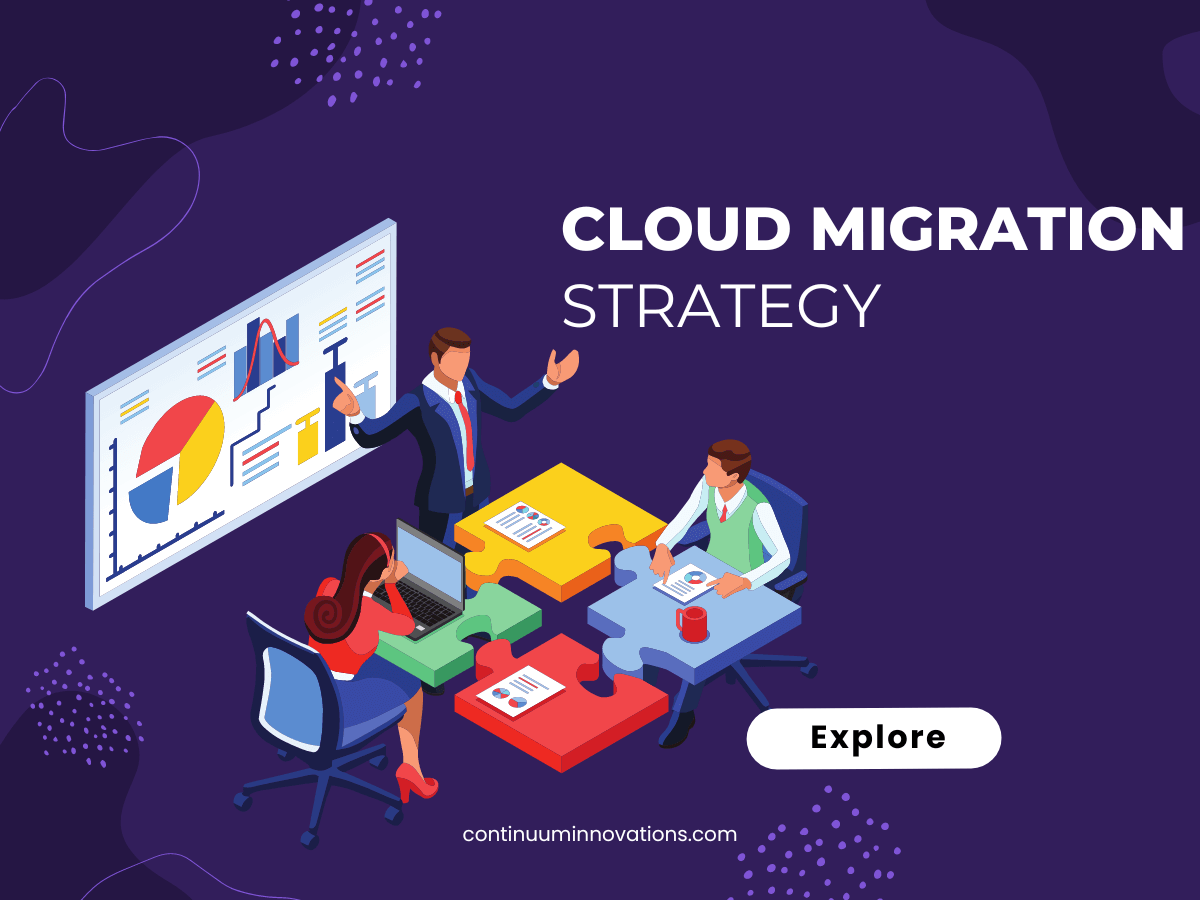Perfect Cloud Migration Strategy for Small and Medium Business
No matter which industry you belong to, your business size, or your annual turnover, the cloud becomes the common denominator for everything. It’s not an option but a necessity these days.
Cloud migration may sound scary or unnecessary when your business goes perfectly well with your on-premises infrastructure, but in the long run, things may get out of your control. What would you do if your business hit the jackpot and was crowded with lots of users as well as data? Migrating to the clouds at that crucial time would be challenging. So, it’s better to learn from case studies than from hazardous mistakes.
Perfect planning and teamwork make everything possible. Let’s dive into what should be done.
Cloud Migration Strategy
A cloud migration strategy is a complete roadmap for the journey towards the cloud. Every business is different, so it should be unique based on the workload, data, and business goals. In other words, it is an end-to-end plan created for an organization to move its on-premises applications/workloads to the cloud environment.
Why should you migrate to the cloud?
Well, the one-word answer is peace. Yes! You need not worry about sudden demands, as it is completely scalable. And it does not let you break the bank, most of the cloud platforms follow the pay-as-you-go principle. So, you only pay for what you have utilized. Flexibility and Agility are important benefits of the cloud.
#1: Choose the right cloud architecture
Cloud architecture is broadly classified as public, private, and hybrid. Decide based on your budget, workloads, and business outcomes.
Private cloud: A private cloud is exclusively dedicated to a single organization, offering enhanced security and control over data, applications, and infrastructure as it is hosted on-premises or by a third-party provider.
Public cloud: Public cloud, on the other hand, provides cloud services over the internet to multiple users and organizations, granting them scalable and cost-effective access to computing resources managed by third-party cloud service providers.
Hybrid cloud: Hybrid cloud combines both private and public cloud infrastructures, allowing seamless integration between them, empowering organizations to leverage the benefits of both models, while also ensuring flexibility, data sovereignty, and tailored solutions to meet specific business requirements.
Also Read: AWS Data Migration Service
#2: Categorize your applications and workloads
Analyze your applications from top to bottom and understand them completely. Prioritize the workloads for migration based on criticality, interdependency, and complexity. In this stage, check factors like data sensitivity and outdated components.
#3: Plan your migration wisely
View your future and plan accordingly. Find out how to improve your business efficiency and serve your clients better.
Stick with a timeframe: set timelines for every phase of migration.
Set milestones: Identify milestones and KPIs for your business.
Budgeting: Do the right budgeting for every phase, and do not forget to include the cost for hardware upgrades, licenses, and tools.
#4: Decide the right cloud migration strategy
Some common types of cloud migration strategies include:
- Lift and Shift (Rehosting): In this strategy, existing applications and data are moved to the cloud without significant modification. It involves replicating the application’s current environment in the cloud.
- Replatforming (Lift, Tinker, and Shift): This approach involves making minor adjustments to applications or databases before migrating them to the cloud.
- Refactoring (Re-architecting): It involves reimagining and restructuring applications to be fully cloud-native, utilizing Platform as a Service (PaaS) offerings. It often requires significant redevelopment and provides great benefits.
- Repurchasing (Replacing): In this strategy, organizations replace their existing applications with software-as-a-service (SaaS) solutions available in the cloud. It is suitable for situations where a suitable cloud-based alternative exists.
- Retire: In some cases, applications or components may no longer be needed, and the organization can choose to retire them rather than migrating them to the cloud.
- Retain (Leave in Current Environment): Not all applications are suitable for migration to the cloud. Some legacy applications or systems may be better left in their current on-premises environment.
#5: Switch to cloud & do testing
Testing is inevitable! You can think of it like a result for a written exam. Testing vividly shows if the cloud migration is done properly or not. Just like cloud migration, we have an objective for testing too. Create a testing strategy and do
- Functional testing
- Performance testing
- Security testing
- Integration testing
#6: Monitor and optimize the cloud environment continuously
Migrating to the cloud is the first step in embracing cloud technology. A cloud environment needs 24-hour governance and monitoring. You should keep track of the storage, cost, and workloads.
Thinking of Cloud Migration?
That’s great! You are not alone on this cloud journey. We, at continuum innovations, provide professional cloud migration services across diverse verticals. Our experts understand your business goals from the root and come up with a highly personalized cloud migration strategy.


